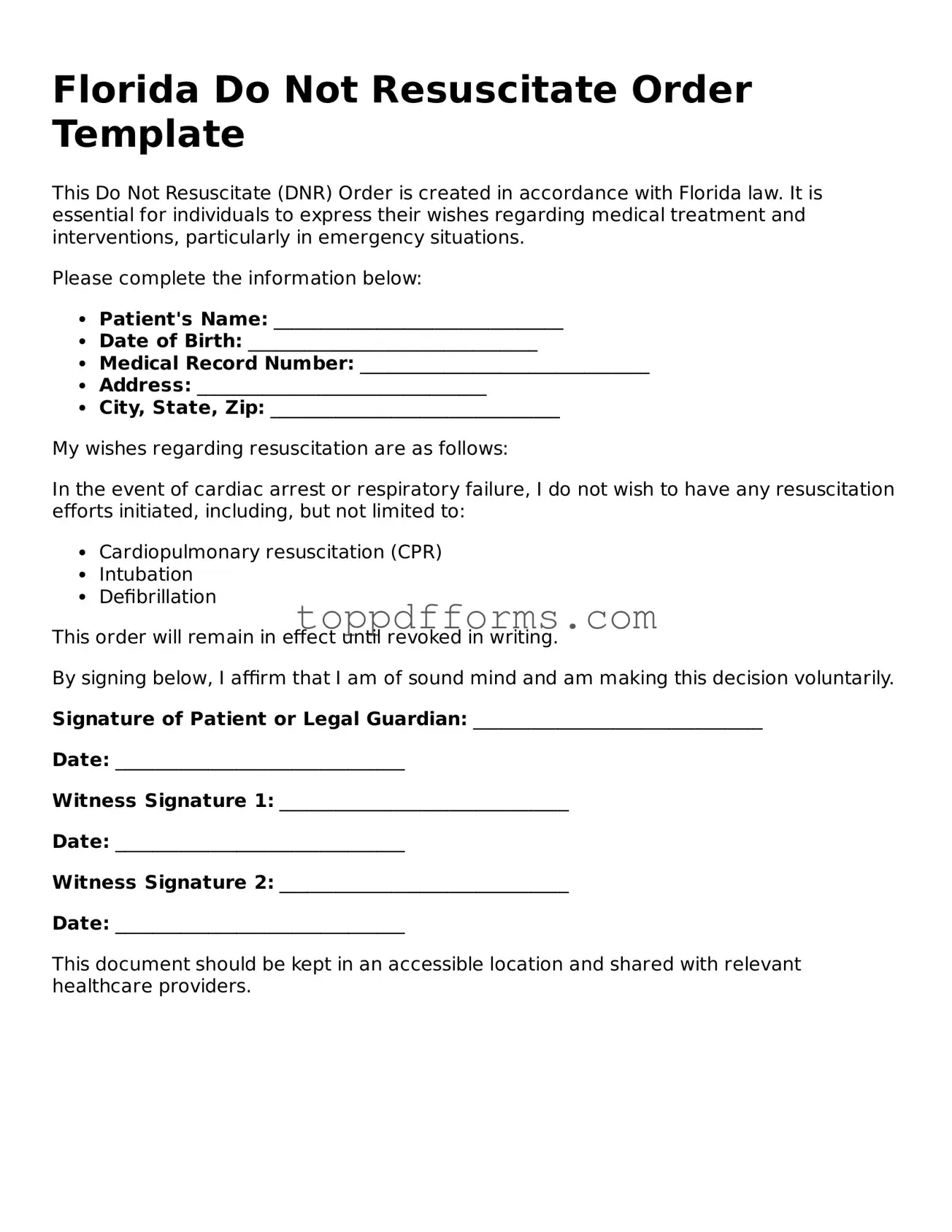What is a Florida Do Not Resuscitate Order (DNRO)?
A Florida Do Not Resuscitate Order is a legal document that allows a person to refuse resuscitation efforts in the event of a medical emergency. This means that if a person’s heart stops beating or they stop breathing, medical personnel will not attempt to revive them. The order is intended for individuals who have a clear understanding of their medical condition and wish to make their end-of-life preferences known.
Who can create a DNRO in Florida?
In Florida, any competent adult can create a Do Not Resuscitate Order. This includes individuals who are facing a terminal illness or have a medical condition that significantly impacts their quality of life. Additionally, a legal guardian or a designated healthcare surrogate can also create a DNRO on behalf of an individual who is unable to make their own medical decisions.
How is a DNRO completed and where can I obtain the form?
The DNRO form can be obtained from various sources, including hospitals, healthcare providers, and online resources. To complete the form, the individual must fill out the required information, including their name, date of birth, and the signature of a physician. It’s important to ensure that the form is signed by a licensed physician to make it valid.
Do I need to have a witness when signing the DNRO?
No, a witness is not required when signing the Florida Do Not Resuscitate Order. However, it’s a good practice to have someone present during the signing process, as this can help clarify the individual's intentions if questions arise later.
Where should I keep my DNRO once it is completed?
Once the DNRO is completed, it should be kept in a place that is easily accessible to both the individual and their healthcare providers. Many people choose to keep a copy in their medical records, with their primary care physician, or in a visible location at home. It’s also wise to inform family members and caregivers about the location of the document.
Can I change or revoke my DNRO?
Yes, you can change or revoke your Do Not Resuscitate Order at any time. If you wish to revoke it, simply destroy the existing form and notify your healthcare providers and family members of your decision. If you want to create a new DNRO, follow the same process as before to ensure it is valid and reflects your current wishes.
What happens if I am in a hospital and have a DNRO?
If you are in a hospital and have a valid Do Not Resuscitate Order, the medical staff will honor your wishes as outlined in the document. It is essential to ensure that the DNRO is included in your medical records so that all healthcare providers are aware of your preferences. Communication with your healthcare team about your end-of-life wishes is crucial.
Is a DNRO the same as a living will?
No, a Do Not Resuscitate Order is not the same as a living will, although they both address end-of-life decisions. A DNRO specifically focuses on resuscitation efforts, while a living will outlines a person's wishes regarding other medical treatments and interventions in case they become unable to communicate their preferences. Both documents are important for ensuring that your healthcare wishes are respected.
